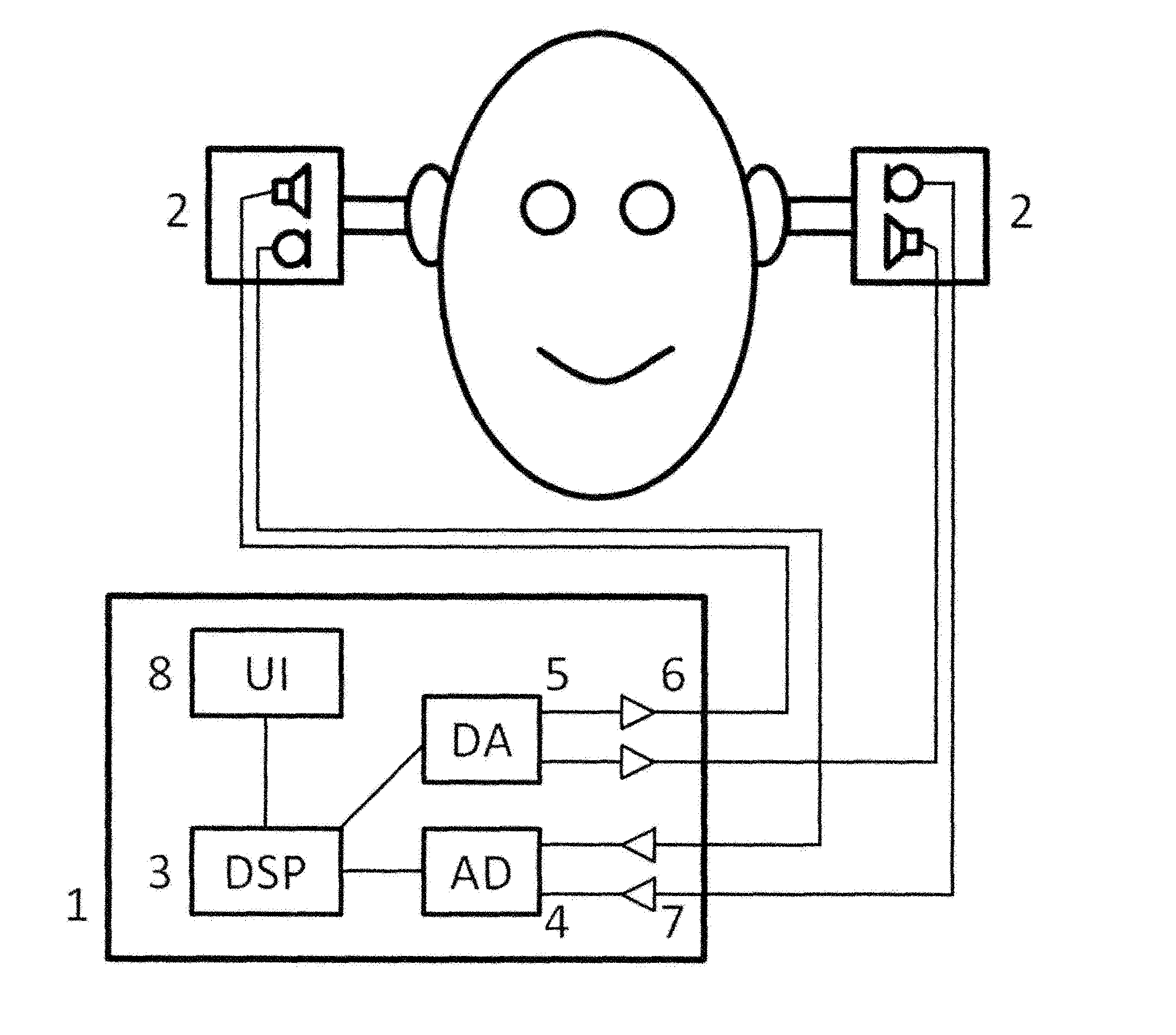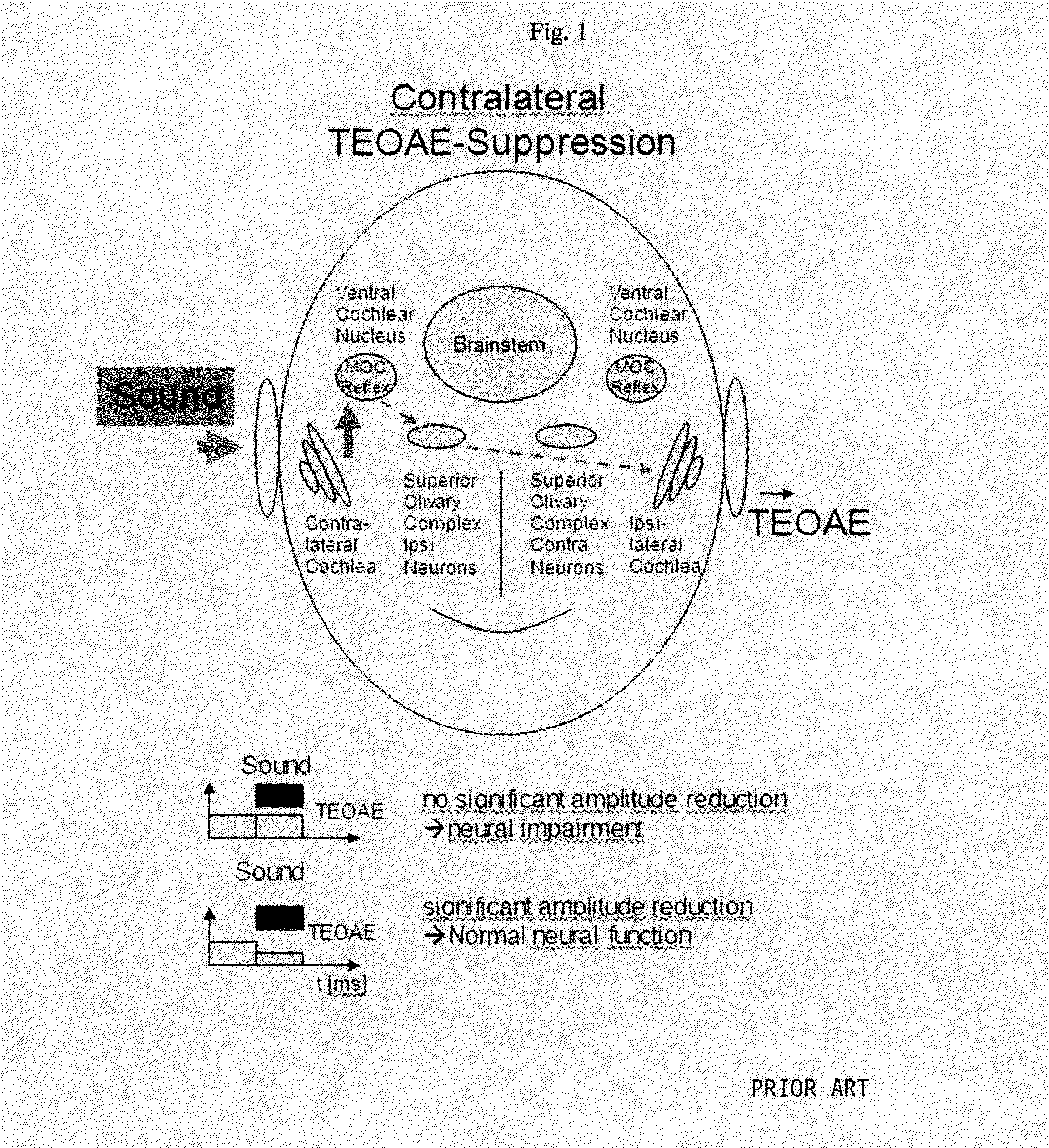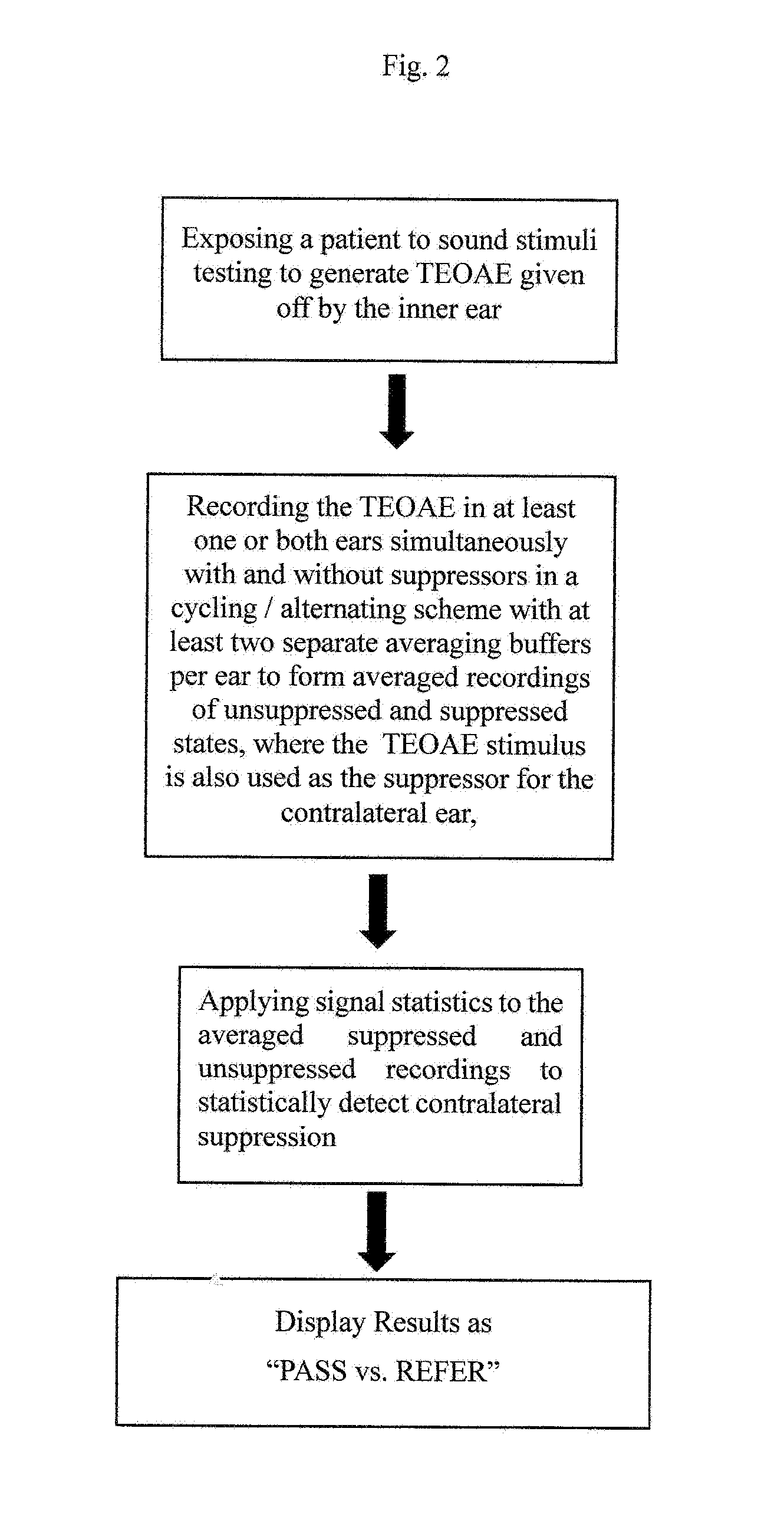Method and Apparatus for Automated Detection of Suppression of TEOAE by Contralateral Acoustic Stimulation
a contralateral acoustic stimulation and automatic detection technology, applied in the field of teoae measurement, can solve the problems of long test time, inconvenient procedure for a fast, automated test,
- Summary
- Abstract
- Description
- Claims
- Application Information
AI Technical Summary
Benefits of technology
Problems solved by technology
Method used
Image
Examples
Embodiment Construction
[0063]The presently preferred embodiments of the present invention will be best understood by reference to the drawings, wherein like parts are designated by like numerals throughout. It will be readily understood that the components of the present invention, as generally described and illustrated in the figures herein, could be arranged and designed in a wide variety of different configurations. Thus, the following more detailed description of the embodiments of the method of the present invention, as represented in FIGS. 1 through 5, is not intended to limit the scope of the invention, as claimed, but is merely representative of presently preferred embodiments of the invention.
[0064]An otoacoustic emission (OAE) is a sound which is generated from within the inner ear. Otoacoustic emissions have since been shown to arise through a number of different cellular and mechanical causes within the inner ear. OAEs disappear after the inner ear has been damaged, so OAEs are often used as a...
PUM
 Login to View More
Login to View More Abstract
Description
Claims
Application Information
 Login to View More
Login to View More - R&D
- Intellectual Property
- Life Sciences
- Materials
- Tech Scout
- Unparalleled Data Quality
- Higher Quality Content
- 60% Fewer Hallucinations
Browse by: Latest US Patents, China's latest patents, Technical Efficacy Thesaurus, Application Domain, Technology Topic, Popular Technical Reports.
© 2025 PatSnap. All rights reserved.Legal|Privacy policy|Modern Slavery Act Transparency Statement|Sitemap|About US| Contact US: help@patsnap.com



